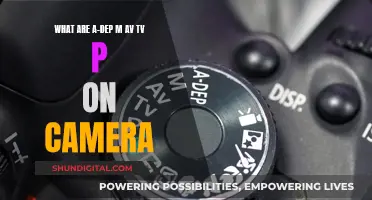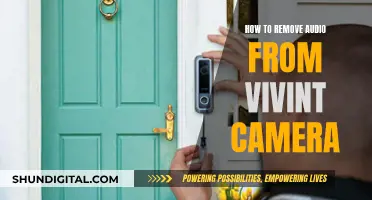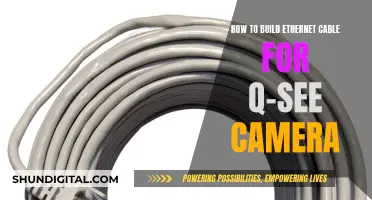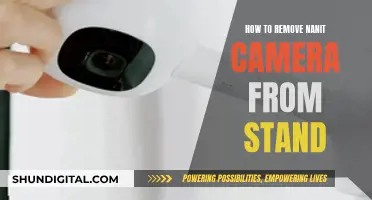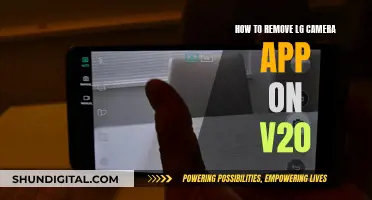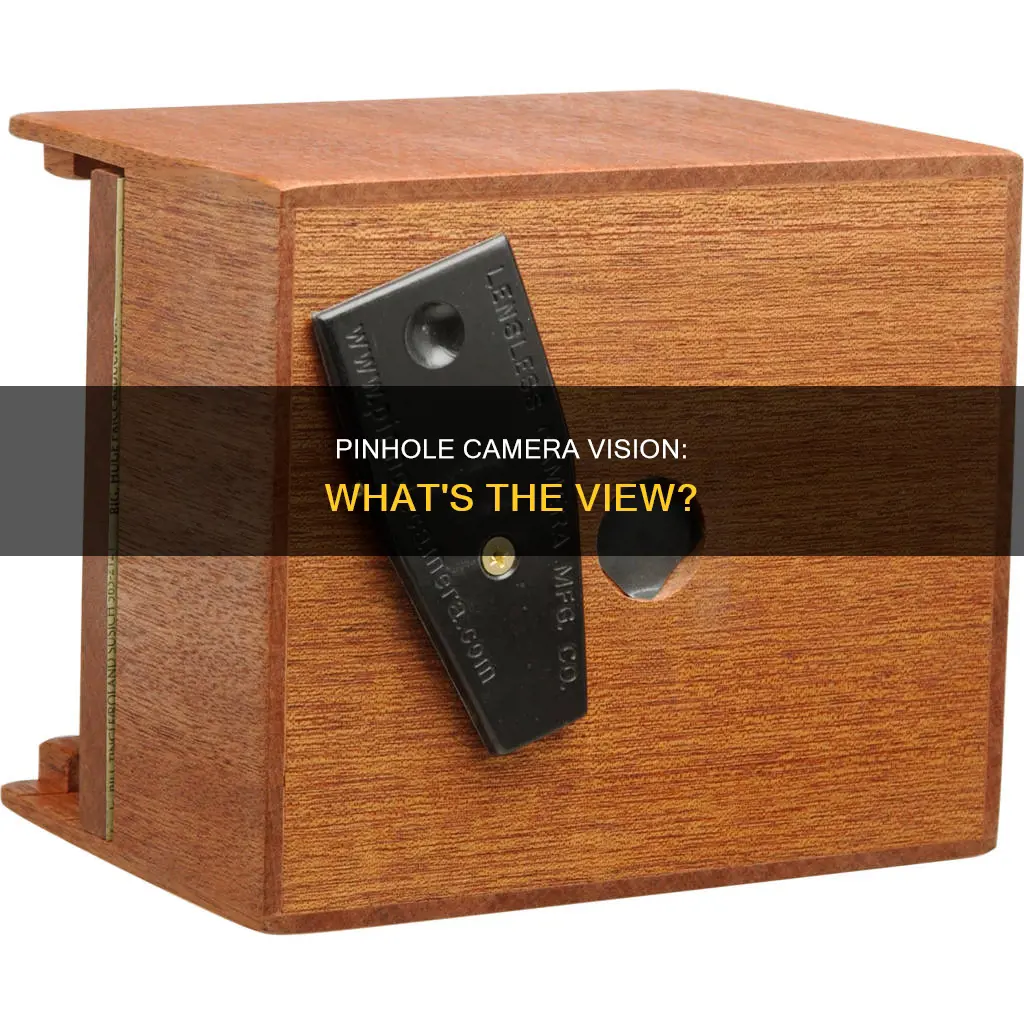
A pinhole camera is a simple imaging device that captures an inverted image of the outside world. The camera is a light-proof box with a tiny aperture, through which light enters and projects an image on the opposite side of the box. This is known as the camera obscura effect. The size of the image depends on the distance between the object and the pinhole, and the smaller the pinhole, the sharper the image. Pinhole cameras are often used to view solar eclipses safely and have been used by artists and scientists for centuries.
| Characteristics | Values |
|---|---|
| Basic Functionality | Light enters through a pinhole, creating an inverted image on the opposite side |
| Use Case | Basic photography without the need for a lens |
| Image Quality | The smaller the pinhole, the sharper the image |
| Image Size | The size of the image depends on the distance between the object and the pinhole |
| Image Focus | The pinhole camera takes in an extremely wide angle |
| Light Sensitivity | The pinhole lets in very little light, requiring long exposure times |
| Construction | A light-proof box with a pinhole aperture and a piece of film or photographic paper |
| Use in Art | Artists have used pinhole cameras for their soft outlines compared to sharp lens images |
| Use in Science | Used in solargraphy to observe the sun's movement and in viewing eclipses |
What You'll Learn

The pinhole camera's function
A pinhole camera is a simple camera without a lens, consisting of a light-proof box, some sort of film, and a pinhole. The pinhole is a tiny aperture, like a small hole made by a pin in a piece of thick aluminium foil. The pinhole lets light through, creating an inverted image on the opposite side of the box, allowing for basic photography without a lens. This is known as the camera obscura effect. The size of the image depends on the distance between the object and the pinhole.
The pinhole camera is an ancient invention, with early descriptions found in the 5th-century BCE Chinese Mozi writings and the Aristotelian Problems (c. 300 BCE–600 CE). The Arabian physicist and mathematician, Ibn al-Haitham (known as Alhazen), studied the camera obscura and its applications in astronomy and perception in the 11th century.
The pinhole in a pinhole camera acts as the lens. Each point of light emitted by an object passes through the pinhole, creating a point of light on the film or viewing screen inside the camera. All of these points come together to form an entire image, which appears in focus on the back wall of the camera. The image is dim because the pinhole is small, but it can be seen if the room is dark. The smaller the pinhole, the sharper the image will be (up to a certain point).
The pinhole camera is used for artistic reasons, as well as for educational purposes, such as teaching pupils about the basics of photography. It is also used in solargraphy to observe the movement of the sun in the sky and to view eclipses safely.
The pinhole camera has a wide range of applications and can be constructed using various materials and methods. It offers a unique way to capture the world and can be a source of creativity and experimentation.
The Eye of Corporate: Watchful Cameras at Work
You may want to see also

Its history
The pinhole camera is a simple device with a long history, dating back thousands of years to the nomadic tribes of North Africa who lived in animal skin tents. A pinhole in their tents would project an image of the outside world, and this image-forming ability of a tiny hole was thought to be known to these tribes.
In the 5th century BCE, Chinese scholars discovered that light travels in straight lines, and the philosopher Mozi recorded the formation of an inverted image with a pinhole. Aristotle also wrote about pinhole images in the 4th century BCE, and in the 10th century CE, the Arabian physicist and mathematician Alhazen described the usefulness of the pinhole camera for viewing solar eclipses without damaging one's eyes.
In the 16th century, the camera obscura, or "dark chamber", was described in detail by Giovanni Battista della Porta in his book "Natural Magic". He demonstrated upside-down images to astounded visitors. Around the same time, Leonardo da Vinci gave a clear description of the camera obscura in his notebooks:
> "When the images of illuminated objects pass through a small round hole into a very dark room…you will see on paper all those objects in their natural shapes and colours. Who would believe that so small a space could contain the image of all the universe? O mighty process! What talent can avail to penetrate a nature such as these? What tongue will it be that can unfold so great a wonder? Verily, none! This it is that guides the human discourse to the considering of divine things. Here the figures, here the colours, here all the images of every part of the universe are contracted to a point. O what a point is so marvellous!"
In the 19th century, photographic pioneers captured images on light-sensitive surfaces for the first time. The Frenchman Joseph Nicéphore Niépce produced the first permanent images made directly by the action of light, which he called "heliographs", in 1822. The English scientist Sir David Brewster was one of the first to make pinhole photographs, coining the term "pin-hole" in his 1856 book "The Stereoscope".
Pinhole cameras continue to be used today, with NASA employing the PIXIE multipinhole camera to capture images of our universe. Pinhole cameras are also used for surveillance because they are difficult to detect.
Movie Magic: Cameras and Mirrors Secrets
You may want to see also

How to make one
A pinhole camera is a simple device that uses a tiny aperture to project an inverted image on the opposite side of the box, known as the camera obscura effect. The size of the image depends on the distance between the object and the pinhole.
Materials:
- An empty shoe box with a lid
- X-Acto knife
- Pencil
- Scissors
- Wax paper
- Tape
- Blanket
- Lamp
Instructions:
- Use the point of a sharp pencil to punch a hole in one of the shorter ends of the shoe box.
- Ask an adult to use an X-Acto knife to cut a square, measuring 2 inches by 2 inches, on the opposite end of the box, directly across from the hole.
- Cut a piece of wax paper that measures 3 inches by 3 inches.
- Place the wax paper over the square you cut in the box and tape its edges securely.
- Take your camera to a dimly lit room and turn on a lamp. Stand about 5 feet away from it.
- Cover your head and the pinhole camera with a blanket, ensuring that the end with the wax paper is facing you and the pinhole end is facing the lamp.
- Hold the pinhole camera at arm's length from your face and aim it at the lamp. Keep it steady until you see an inverted image of the lamp projected onto the wax paper.
You can also make a pinhole camera using white card stock and aluminium foil. Cut a 1-inch to 2-inch square or rectangular hole in the middle of one of the card stock pieces. Tape a piece of aluminium foil over the hole and poke a small hole in the foil using a pin, paper clip, or pencil. This method is particularly useful for safely viewing solar eclipses.
For more complex pinhole cameras, you can use materials such as wood, foam board, cigar boxes, or soda cans. You can also purchase pre-made pinhole cameras or lenses to attach to your own handmade camera.
Reviewing Past Activity on Your SimpliSafe Camera Footage
You may want to see also

The pinhole effect
The concept of the pinhole effect is to block out unwanted rays of light, allowing only the desired rays to pass through and create a sharp and focused image. The smaller the pinhole, the smaller and sharper the point of light that is created. However, if the pinhole is too small, it can cause diffraction effects and result in a less clear image. The optimal size of the pinhole is approximately 1/100 or less of the distance between it and the projected image.
The pinhole camera has a wide range of applications, from artistic experiments to scientific observations. It has been used to study the movement of the sun, view eclipses safely, and even photograph X-ray and gamma-ray radiation. The pinhole camera is also known for producing soft outlines and out-of-focus images, which has made it a popular choice for photographers and artists.
Building a pinhole camera is a simple process and can be done with everyday materials such as a light-proof box, a small piece of metal with a pinhole, and photographic paper or film. The simplicity and versatility of the pinhole camera make it a fascinating tool for experimentation and creativity.
The Apollo 11 TV Camera: Still Operational?
You may want to see also

The pinhole camera's advantages and disadvantages
A pinhole camera is a simple, lensless camera with a tiny aperture that projects light from a scene onto the opposite side of the box, creating an inverted image. This is known as the camera obscura effect. Pinhole cameras can be handmade using basic household items such as cardboard boxes, aluminium foil, pins or needles, and black electrical tape.
Advantages:
Pinhole cameras are inexpensive and easy to make, offering an interesting alternative to high-tech camera equipment. They are a great educational tool for photographers to learn about the basics of photography, light, and exposure. They also allow for experimentation and can produce unique and unpredictable images.
Disadvantages:
Pinhole cameras offer less control over the image-making process than modern cameras. They require longer exposure times and often result in less clear and sharper images due to the small aperture and the diffraction effects of light. They are also not suitable for capturing fast-moving subjects or low-light situations due to the long exposure times needed.
Gizmo Watch: Camera-Equipped or Camera-Free for Kids?
You may want to see also
Frequently asked questions
A pinhole camera is a simple camera without a lens but with a tiny aperture, effectively a light-proof box with a small hole in one side.
Light enters through the pinhole, creating an upside-down image on the opposite side, allowing for basic photography without the need for a lens.
The concept of creating a pinhole is to block out the undesired rays when light passes through it, creating a clear image of the object being viewed.
A pinhole camera is used for artistic reasons, in solargraphy to observe the sun's movement, and in viewing eclipses.


